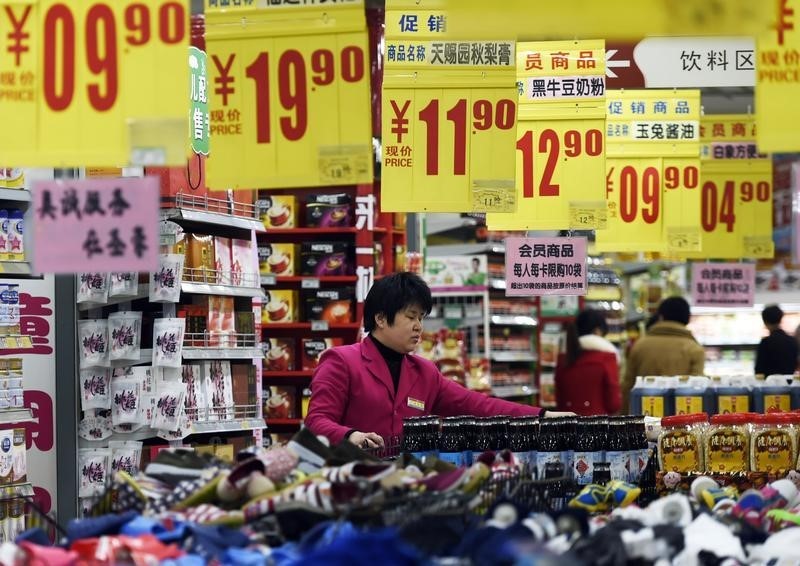Investing.com-- Chinese deflation has remained in play even as recent gross domestic product data showed some improvement in economic growth. This trend raised the question of whether price weakness in the country could spill over into its export destinations.
Consumer price index inflation weakened month-on-month in March, while producer price index inflation shrank more than expected. The GDP deflator- which covers overall prices in the economy- fell 1.04% in the first quarter, even as overall GDP rose more than 5%.
This raised the question of whether Chinese deflation was being exported to the rest of the world.
Analysts at BoFA said in a note that China’s main deflationary driver was a cooling in global commodity prices and easing supply chain issues.
The country had exported some disinflation to Europe and Asia, but BoFA analysts said that this had limited impact on regional inflation, given that Chinese goods account for a small portion of actual final consumption in export markets.
Additionally, China’s export destinations are grappling with increased service price inflation, on which export prices have little bearing.
Asia also not vulnerable to Chinese disinflation
BoFA analysts also said that Chinese deflation had a limited impact on Asian inflation, despite the closer trade ties and geographical proximity.
Chinese imports also make up a relatively small portion of final consumer consumption in Asia.
While Asia did see a significant drop in inflation over the past year, a bulk of this was driven by softer food prices- of which China is not a major exporter.
Softer energy prices also contributed to Asian disinflation, although this was also more tied to weaker global oil prices, rather than softer Chinese export prices.
BoFA analysts added that the prospect of Chinese deflation affecting heavily exposed sectors such as steel and automobiles was also minimal, given that domestic factors largely overshadowed any potential impact from the mainland.
BoFA analysts used Hong Kong as a prime example of how China could not effectively export deflation. Even with its geographical and economic proximity to China, Hong Kong’s inflation has remained largely steady, even as the mainland struggled with nearly a year of deflation.
